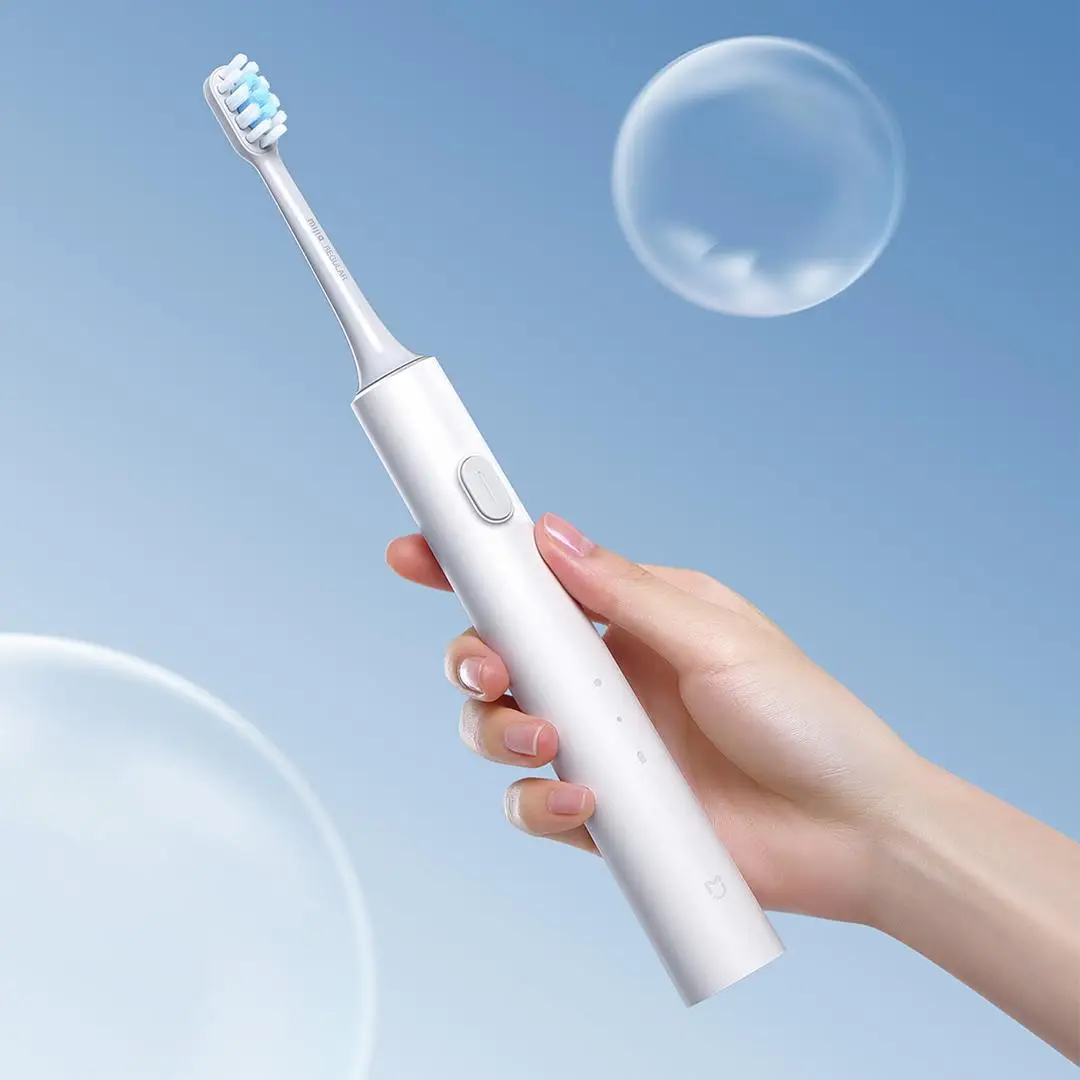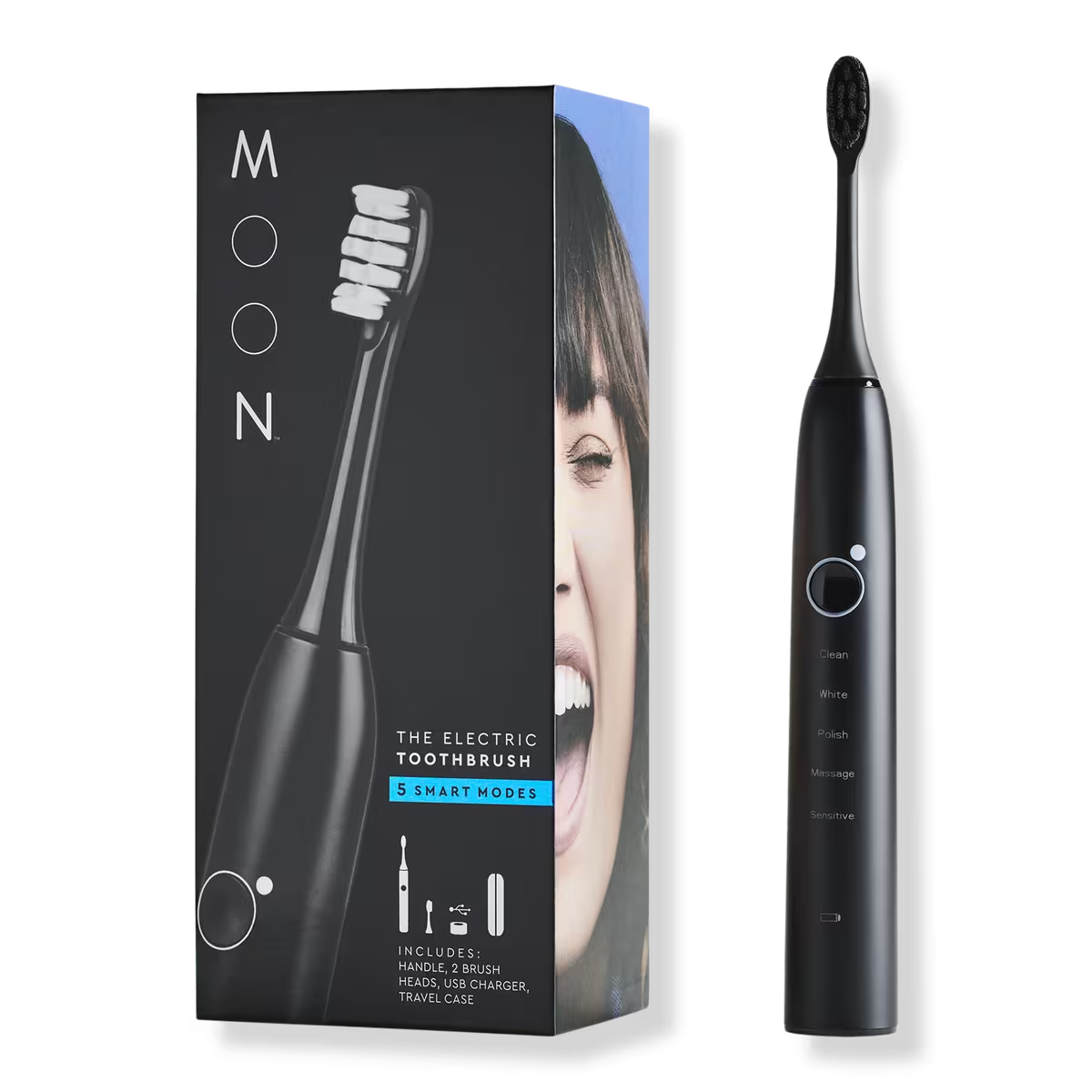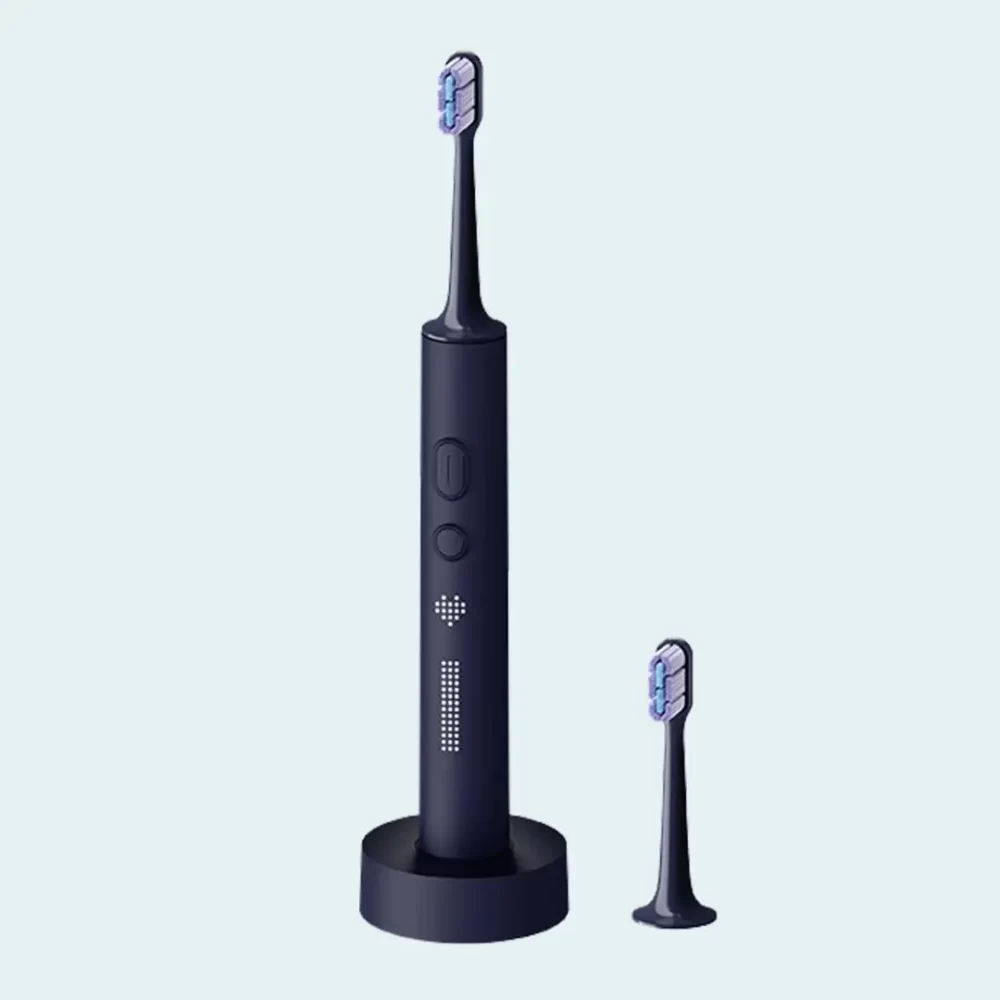Introduction to Electric vs Manual Toothbrushes
Choosing between electric and manual toothbrushes can be tricky. Both types help remove plaque and maintain oral hygiene. You might wonder, why go electric? This introduction will highlight the key points for why an electric toothbrush is often the better choice.

Electric toothbrushes boast superior plaque removal. Studies show they remove more plaque than manual brushes. This is due to their advanced bristle action. They rotate, oscillate, and pulsate to break up plaque effectively.
Electric toothbrushes don’t just clean better; they make the process easier. They take on the work of brushing, making it more likely to brush properly. This is especially true for those with mobility issues or children learning to brush.
We will dive into how electric toothbrushes offer advantages for gum health. We will also explore their ease of use and technological benefits. Later sections will consider their environmental impact and offer tips for choosing and maintaining your toothbrush.
Embracing technology in daily routines like brushing can have lasting health benefits. Read on to learn about the benefits of electric toothbrushes and how they compare to manual options.
Key Advantages of Electric Toothbrushes
Electric toothbrushes come out ahead with several key benefits. They are known for brushing smarter, not harder. These toothbrushes have bristles that move in special ways. This action helps break down and remove more plaque than manual brushes can. Studies back this up, showing that less effort is required for better oral cleanliness.
One of the biggest pros is their ability to tackle tough plaque. Plaque can lead to gum disease and tooth decay. Electric brushes work harder in those tough spots between teeth. They can move thousands of times per minute. This movement beats what hands and wrists can do alone.
Another point is comfort and ease for everyone. People with sore hands or less grip strength might find electric brushes better. They do most of the work for you. You just guide them along your teeth. Also, they often come with built-in timers. These timers help make sure you brush for the full two minutes that dentists suggest.
For kids, they can make brushing fun and effective. Kid-friendly designs encourage them to brush regularly. This can help set up good habits for life.
Lastly, the cutting-edge features of electric toothbrushes are noteworthy. Some models connect to apps via Bluetooth. This lets you track your brushing habits. Others may have pressure sensors. These sensors alert you if you’re brushing too hard. They protect your gums. You can find toothbrushes with multiple modes like massage, sensitive, or deep clean too. This tailors brushing to your personal needs.
Choosing an electric over a manual toothbrush brings these core benefits. They clean more thoroughly, are easier to use, and come packed with features that help maintain oral health.
How Electric Toothbrushes Protect Against Gum Disease
Gum disease is a major oral health concern. It can lead to tooth loss and other complications. Electric toothbrushes can be a powerful ally against this issue. Here’s how electric toothbrushes help prevent gum disease:
Superior Plaque Removal
Electric toothbrushes offer exceptional plaque removal. Their advanced bristles move fast to clean between teeth and along the gum line. This motion reduces plaque build-up — the main cause of gum disease.
Gentle on Gums
Using an electric toothbrush correctly is gentle on your gums. It can prevent damage caused by brushing too hard with a manual toothbrush.
Timely Reminders
Built-in timers ensure you brush for the full two minutes recommended by dentists. Regular and adequate brushing keeps your gums healthy.
Tailored Brushing Modes
Many electric toothbrushes have specialized modes for gum care. These modes provide the right amount of pressure and movement to clean without harm.
Encourages Consistent Habits
The ease of use of electric toothbrushes promotes consistent oral care habits. Regular brushing is key in preventing gum disease.
To sum up, the benefits of electric toothbrushes go beyond cleaning. They also protect your gums by effectively removing plaque and being gentle during brushing. Their advanced features encourage better brushing habits, contributing to overall gum health.
 The Ease of Use with Electric Toothbrushes for All Ages
The Ease of Use with Electric Toothbrushes for All Ages
Electrical toothbrushes simplify daily oral care for everyone, regardless of their age. Here are several reasons why they’re user-friendly for both young and old:
1. For Children
- Simple Operation: Electric toothbrushes do most of the brushing work. Kids just need to guide them along their teeth.
- Build Good Habits: Fun designs and characters make brushing more appealing to kids. This helps them form positive dental habits early on.
- Age-Appropriate Options: Many electric toothbrushes are designed specifically for children with smaller handles and brush heads.
2. For Adults
- Effective Cleaning: Adults benefit from the efficient plaque removal electric toothbrushes offer. This can prevent dental issues as they age.
- Ease for Those with Mobility Issues: People with arthritis or limited hand mobility find electric options easier to use.
- Variety of Modes: With modes for sensitive teeth or gum care, adults can cater their brushing experience to their needs.
3. For Seniors
- Gentle on Sensitive Gums: Electric toothbrushes can be soft on the gums, which is important for seniors’ oral health.
- Less Effort: The automated motions require less strength and movement than manual brushing.
- Maintaining Independence: Electric toothbrushes assist seniors in maintaining their oral health without assistance.
The bottom line is, electric toothbrushes offer an ease of use that can help all ages maintain healthier teeth and gums with less effort.
Technological Features and Tracking with Electric Toothbrushes
In today’s world, electric toothbrushes come with advanced technological features. These features not only aim to enhance the effectiveness of your brushing routine but also add a layer of fun and convenience that manual brushes can’t match. Here’s a rundown of some of the cutting-edge technological benefits you can expect from an electric toothbrush:
Bluetooth Connectivity and App Integration
Most high-end electric toothbrushes now offer Bluetooth connectivity. This allows them to sync with mobile apps. These apps track your brushing habits over time. You get insights into how well you brush and where you need improvement.
Real-Time Feedback
Some models provide real-time feedback. They guide you during brushing to ensure you cover all areas adequately. This function helps you attain a balanced clean across your entire mouth.
Multiple Brushing Modes
Electric toothbrushes often come with various modes. They include settings for sensitive teeth, whitening, or gum care. This lets you personalize your brushing experience to your own dental needs.
Pressure Sensors
Over-brushing can harm your gums. Many electric toothbrushes feature pressure sensors. They alert you if you’re brushing too hard. This protects your gums from unnecessary wear and tear.
Built-In Timers
A two-minute timer is a standard feature. It encourages brushing for the dentist-recommended time. This ensures a thorough clean each time you brush.
Removable Heads with Various Bristle Designs
Different bristle designs target specific dental concerns. With electric toothbrushes, you can swap out brush heads. This means you can choose the best type to suit your oral health needs.
Charging Options and Battery Life Indicators
Convenient charging stands keep your toothbrush powered up. Battery indicators tell you when it’s time to recharge. Long battery life ensures your brush is ready when you are.
These technological advancements make electric toothbrushes not just a tool, but a dental care partner. They encourage optimal brushing practices and play a significant role in maintaining oral health. Understanding and using these features effectively can enhance the benefits of electric toothbrush that they provide.
Considering the Environmental Impact of Electric vs Manual Toothbrushes
When choosing a toothbrush, we must think about the environment. Electric and manual toothbrushes affect it differently. Here are some points to consider:
Waste Reduction
Electric toothbrushes have replaceable heads. You only change the head, not the whole brush. This can mean less plastic waste over time.
Battery and Electricity Use
Electric toothbrushes need charging. Some use batteries. This uses resources and creates waste. However, rechargeable brushes can reduce this impact.
Longevity and Durability
Quality electric toothbrushes can last many years. They might outlive many manual brushes. This could mean buying fewer brushes over time.
Recycling Challenges
Electric toothbrushes are hard to recycle. They have batteries and electronic parts. Manual brushes are simpler but still often plastic.
Both types of toothbrushes have pros and cons for the environment. Electric toothbrushes can lead to less waste if used for a longer time. But they use energy and are hard to recycle. Manual brushes create more plastic waste but are simpler to produce. Think about how you use and dispose of your toothbrush. This can affect its environmental footprint. Choose what fits your needs and consider the planet too.
Guidance on Selecting the Right Toothbrush for Your Needs
Selecting the ideal toothbrush is key to maintaining oral health. Here’s how to choose wisely:
Assess Your Dental Health Needs
Consider your unique dental health. Do you have sensitive teeth, braces, or receding gums? An electric toothbrush with various modes can cater to these needs.
Consider Brush Head Size
The right brush head size helps reach all areas of your mouth. A smaller head can navigate tight spaces easily.
Look for ADA Approval
Choose a toothbrush approved by the American Dental Association (ADA). This ensures it meets certain effectiveness and safety standards.
Evaluate the Bristle Type
Soft bristles are often the best choice. They clean effectively without hurting your gums or enamel.
Prioritize Comfort and Grip
Ensure the toothbrush feels comfortable in your hand. A good grip can make brushing easier, especially for those with hand mobility issues.
Factor in Technological Features
Consider toothbrushes with timers, pressure sensors, and multiple modes if you prefer a more guided brushing experience.
Decide on Power Source
Do you prefer rechargeable or battery-powered toothbrushes? Think about convenience and the availability of charging stations in your home.
Think Long-term
An electric toothbrush is an investment. Quality electric toothbrushes can last years, making them cost-effective in the long run.
Involve Kids in the Choice
Kids might brush more if they like their toothbrush. Look for electric toothbrushes with fun designs or characters that appeal to young ones.
Choose a toothbrush that fits your needs and lifestyle. Brush effectively twice a day to ensure the best oral health.
 When to Replace Your Toothbrush and Maintenance Tips
When to Replace Your Toothbrush and Maintenance Tips
Maintaining your toothbrush is vital for oral health. Here, learn when to replace it and how to keep it clean.
Knowing When to Replace Your Toothbrush
Replace a manual toothbrush every 3-4 months. For electric ones, change the head as often. Frayed bristles mean it’s time for a new one. After illness, get a new toothbrush to avoid re-infection.
Caring for Your Electric Toothbrush
- Rinse Well: After use, rinse your toothbrush head under water to remove debris.
- Dry Thoroughly: Store upright and let it air-dry to prevent bacteria growth.
- Recharge Regularly: Keep your toothbrush charged for consistent performance.
- Brush Head Care: Swap the head every few months or when worn out.
Best Practices for Manual Toothbrush Care
- Rinse and Dry: Rinse your toothbrush and store it upright and air-dry.
- Regular Replacement: Change your manual brush every 3 to 4 months.
- Separate Storage: Keep your brush in a holder where it won’t touch others.
Enhancing Toothbrush Lifespan
Avoid pressing too hard when brushing to prolong your brush’s life. Soft bristles are key; they last longer and protect your gums and enamel.
Disposing of Old Toothbrushes
Properly discard your worn-out brush. Look into recycling programs for electric toothbrushes. With manual ones, remove bristles and recycle the plastic handle if possible.
Taking care of your toothbrush is a simple yet important part of dental hygiene. A well-maintained toothbrush means a cleaner mouth and better oral health.